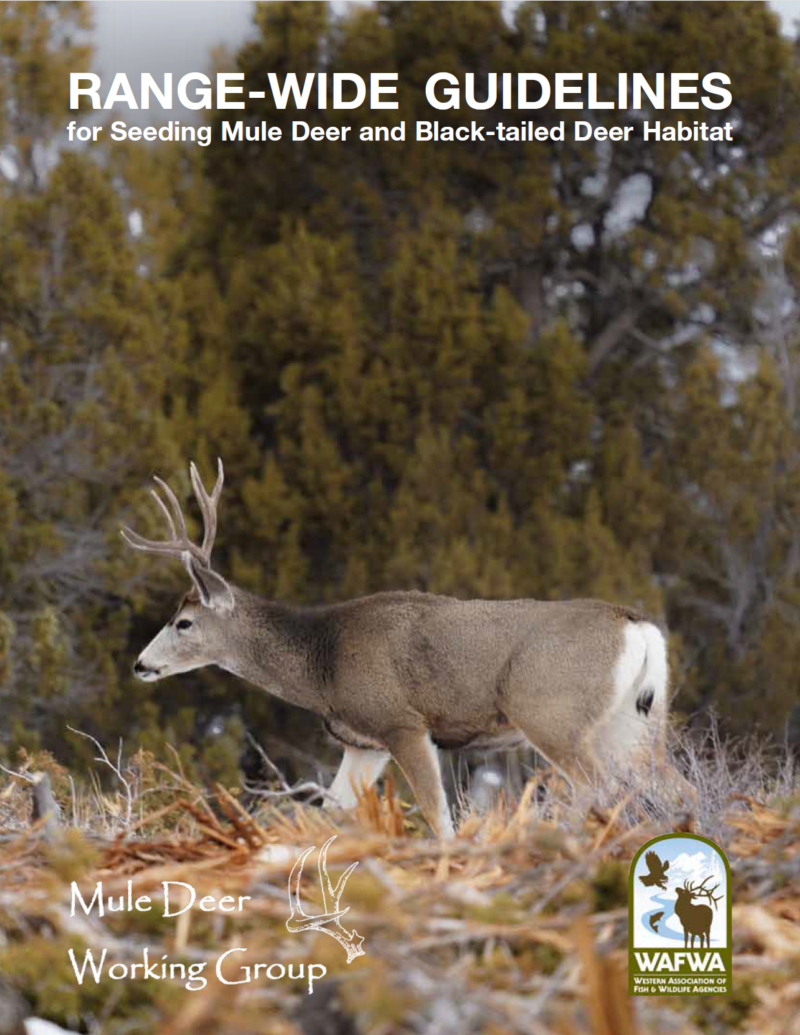High-quality, abundant habitat is the foundation of healthy, growing mule deer and black-tailed deer (Odocoileus hemionus) populations. It ensures that individuals within populations have adequate food, water and shelter so they can survive and reproduce. Maintaining the right balance of productive deer habitats is one of the greatest challenges facing managers today. Human development, invasive species, changing climatic conditions, and the increasing frequency and intensity of wildfires are just some of the disturbances that are impacting the quantity and quality of mule deer and blacktailed habitat throughout their range. The need for restoration and conservation of mule deer habitat is an immense task (Remington et al. 2021).
A product of the Mule Deer Working Group, sponsored by the Western Association of Fish and Wildlife Agencies.
Approved January 2022. Produced with support from the Mule Deer Foundation — www.muledeer.org
Suggested citation: Summers, D. D., K. L. Gunnell, A. D. Green, C. Payne, S. A. Green, C. D. Jones, and J. L. Vernon.
2022. Range-wide guidelines for seeding mule deer and black-tailed deer habitat. Mule Deer Working Group, Western
Association of Fish and Wildlife Agencies, Boise, Idaho, USA.
Attached Files
| File | Action |
|---|---|
| Rangewide Guidance for Blacktail and Mule Deer Seeding Booklet 2022.pdf | Download |
- Version
- File Type pdf
- File Size 2.08 MB
- Publication Date August 15, 2022
